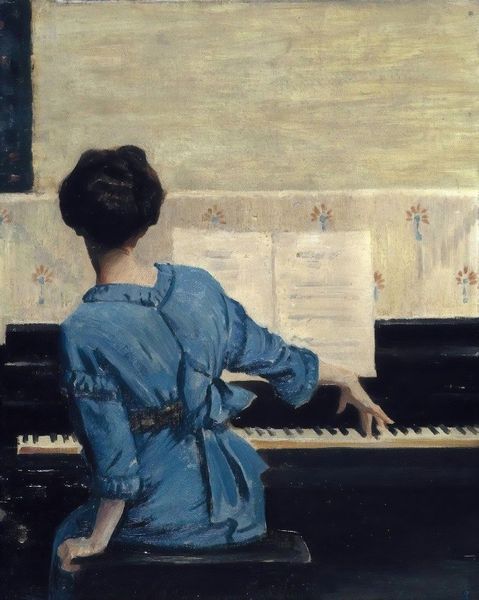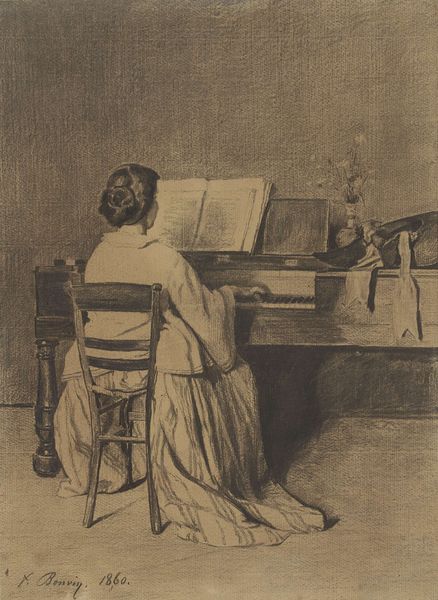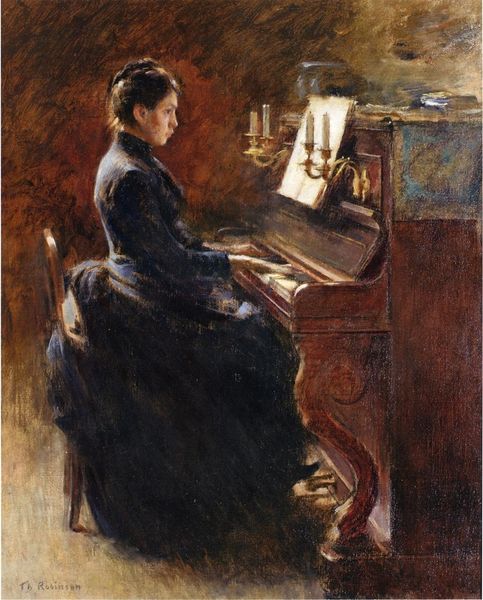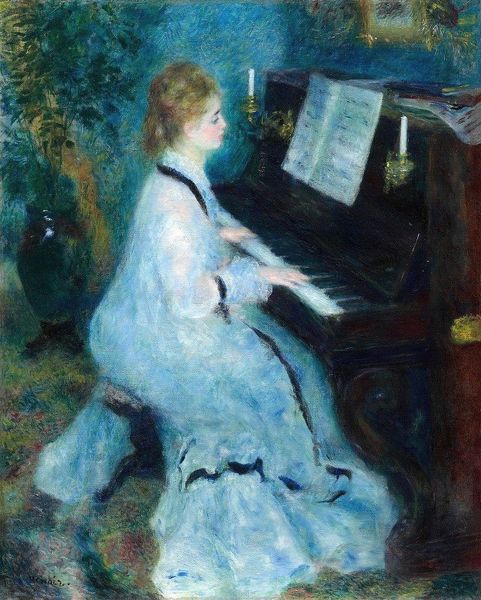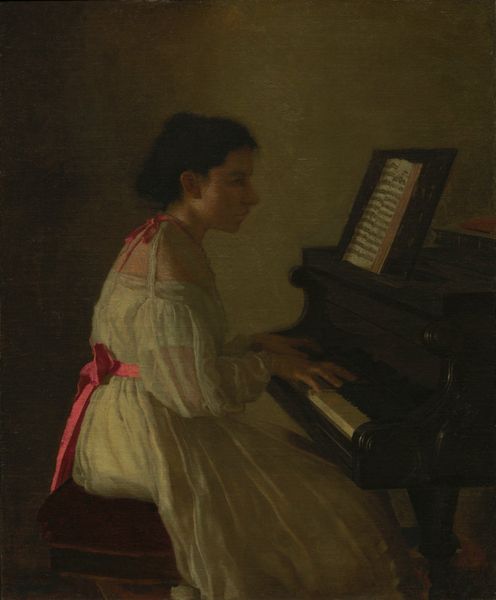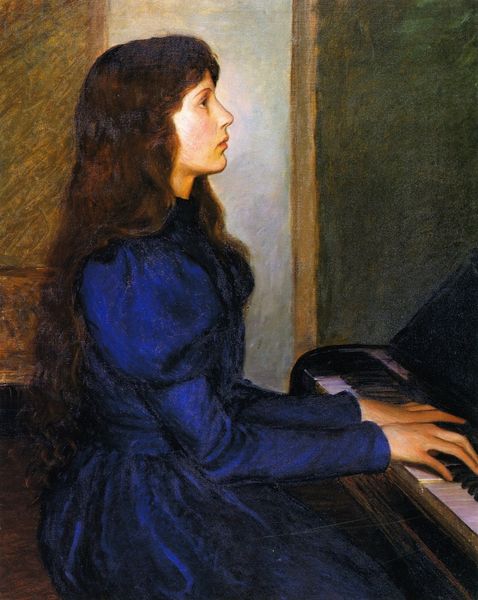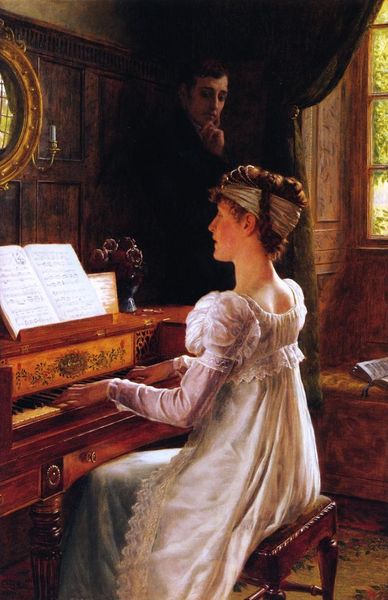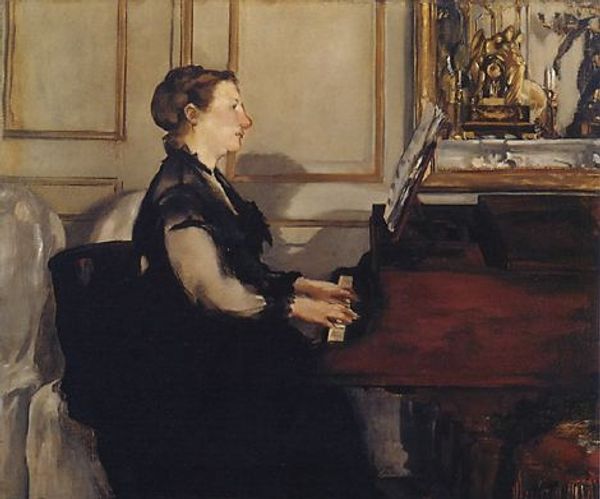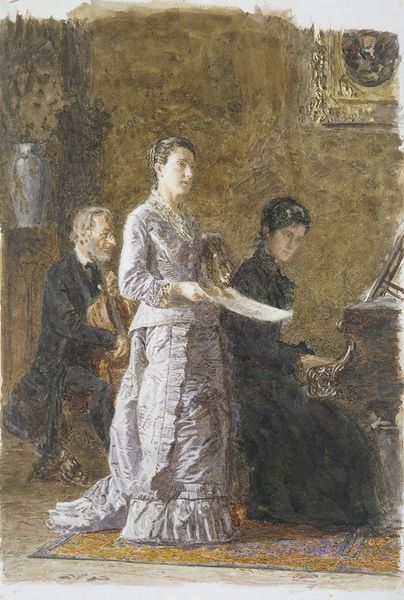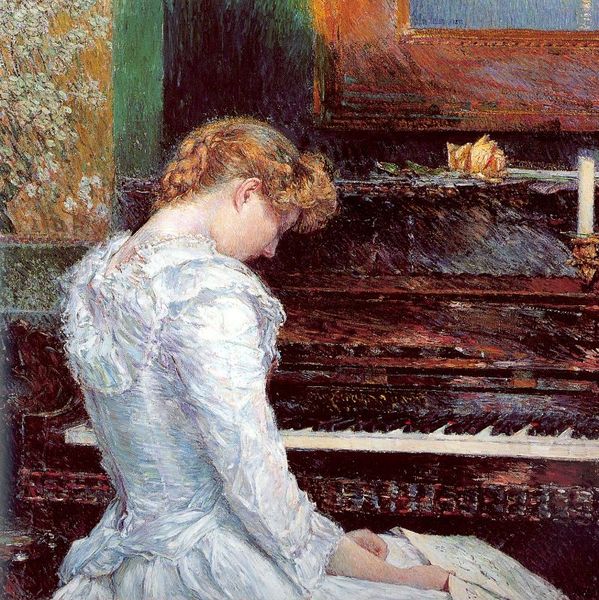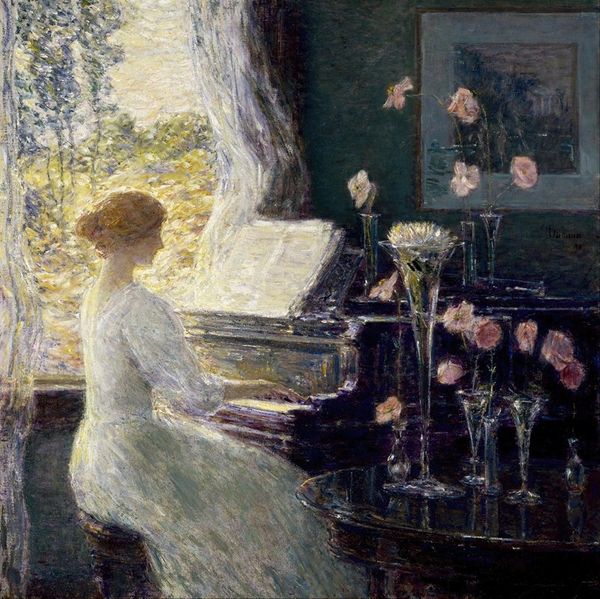
painting, oil-paint
#
portrait
#
16_19th-century
#
painting
#
impressionism
#
oil-paint
#
oil painting
#
genre-painting
Dimensions: 50 x 40 cm
Copyright: Public domain
Curator: Welcome. We're here to consider "Au Piano," an oil painting often attributed to Louise Abbéma, offering a glimpse into late 19th-century domesticity. What are your initial thoughts? Editor: I find myself drawn to the somber, almost muted palette. The impasto brushstrokes contribute to a sense of immediacy, suggesting a fleeting moment captured. I immediately wonder what sounds might emerge if this piano still stands and breathes within its social world. Curator: Absolutely. Observe how the artist employs tonal values to define form, with a focus on capturing the reflective qualities of light across the figure's back and the polished wood of the piano. There's a clear emphasis on atmospheric perspective to create depth and separate foreground from background. Editor: But I see beyond mere visual representation. Consider the role of women during the Impressionist era and ask: who might she be? What demands are put on the labor and display of talent, of "proper" craft? Is this a commission, a family expectation? The very presence of a piano speaks to socio-economic strata. Curator: Indeed. Abbéma, like many Impressionists, often blurred the lines between traditional portraiture and genre painting. Note how the musical score itself appears almost as a flat, abstract plane of light against the richly textured environment. The structural function emphasizes its place as a surface reflecting light but obscuring its details. Editor: Which leads to an even larger, urgent question: how were pianos crafted during this time period and where would one source raw materials? To know who benefits from this form of cultural refinement begs us to look at exploitative labor in its industrial origins. Curator: That’s a compelling connection. To draw on material presence adds to the overall composition. Now, I wonder, what could have prompted Abbéma to stage this quiet intimate scene? Editor: Perhaps we could delve deeper into these cultural constructions through rigorous historical labor. This has shifted my original view quite a bit! Curator: I appreciate you making these important ties to social considerations, enhancing and even complicating how one reads the painting today. Editor: Thanks for this formal context--it gives me pause about aesthetic value in the labor economy.
Comments
No comments
Be the first to comment and join the conversation on the ultimate creative platform.
